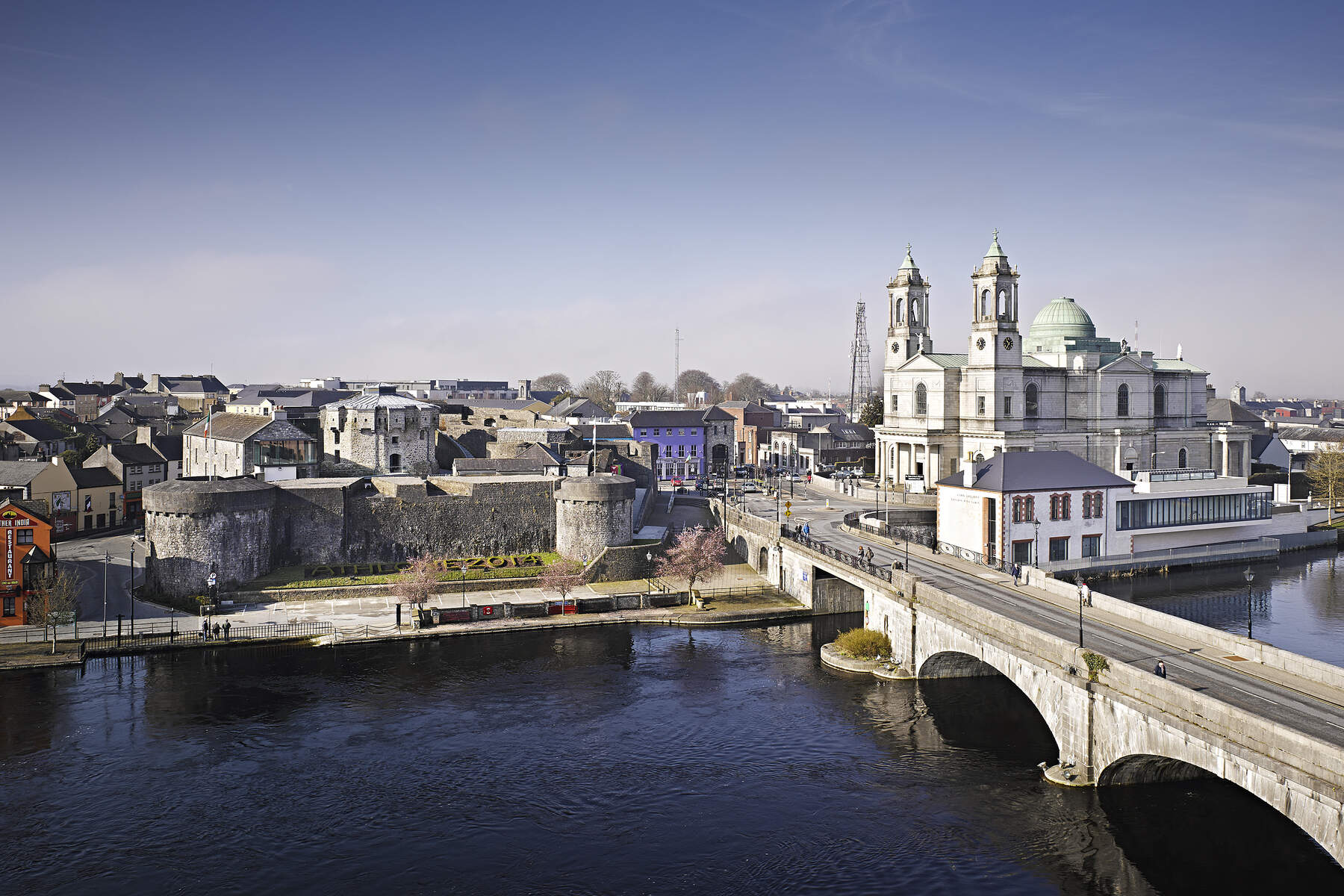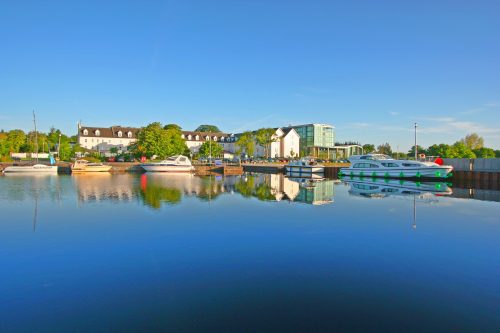In part two of Felicity and Wilf’s journey, the couple travel further afield to Athlone for a two night stay in The Hodson Bay Hotel, taking in Clonmacnoise, Athlone Castle and a river trip with the infamous Viking Mike!
___________________________________________________________________________________________________________________________
Months spent writing a novel can result in cabin fever and, this year, I discovered that socially-distanced signings and TV interviews are exhausting. So, recently, having finished a book, I’ve been longing for wide open spaces and no need to wear makeup when I need to wear a mask! Luckily, Golden Ireland came up with the perfect destination for a break. There’s a broad, expansive feel about Ireland’s Hidden Heartlands, as though the rich plains through which the Shannon meanders offer as warm a welcome as the people you encounter. You can set your own pace, go with the flow, dress up or be informal. Hotel staff and guides take time to chat and are full of stories. And, though the tourist experience can be sophisticated, everywhere it’s informed by personal touches.
Having spent the first two of four nights at the charming Tullamore Court Hotel in Offaly, Wilf and I drove through Westmeath to the Hodson Bay Hotel in Roscommon. On the way, we explored the ruins of Clonmacnoise, a sixth century monastic site founded on the banks of the Shannon. A fine Visitor Centre offers background information, and there’s a gift shop with outdoor seating close by which sells ice-cream, teas and coffee. Many significant manuscripts, including the 11th century Annals of Tighernach and the 12th century Book of the Dun Cow, were written at Clonmacnoise. Home to three high crosses, a cathedral, seven churches and two round towers, it’s the perfect place to appreciate the historic importance of the river to the area, and to understand how Viking longships penetrated so deeply into Ireland, to raid monasteries and loot their treasures. While there, we walked to the nearby Nun’s Church, one of the country’s finest examples of Hiberno-Romanesque architecture. Built under the patronage of Dearbhforgaill (Dervorgilla), whose abduction was one of the events that led to the Norman invasion of Ireland, it was completed in 1167 and now stands roofless among quiet fields grazed by sheep and cattle.
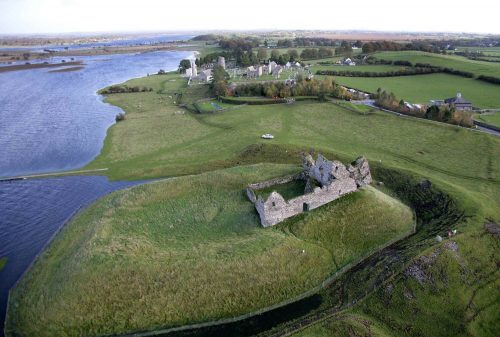
Clonmacnoise – a spectacular monastery on the banks of the River Shannon
Tranquillity, spaciousness, and a sense of the nearness of water characterised our Hidden Heartlands break. The Hodson Bay Hotel, on the narrow Yew Point peninsula, overlooks Lough Ree, the second of the Shannon’s three major lakes. The original building has been extended to include a sleek Leisure Centre and Health Spa with lake views; and 140 acres of unspoiled meadows and woodlands at the end of the peninsula are lovingly being developed for rambles, picnics, yoga and meditation, with help and advice from environmental experts. There’s a looped trail, created during lockdown, which includes some lakeshore access and a fairy trail for children, and plans have been made for eco-cabins, bird watching and herb gardens, with conservation and sustainability at the heart of the project. We arrived late in the afternoon and, after a rest in our lovely room, went downstairs for dinner, where our smiling waiter, seeing Wilf enjoying the piquant sauce that came with his main course, appeared unasked with more in a little jug.
The following day, after breakfast, we took a taxi to Athlone Castle. Towering above a strategic crossing-point on the Shannon, it incorporates elements of an Anglo-Norman stronghold and of later Napoleonic fortification. At the transfer of control from the British to the Free State army, a mast was requisitioned from a vessel on the river, as a flagstaff for the tricolour, and the castle was used by the Irish military from 1922 until 1970. Now it’s a museum with eight remarkable exhibition spaces. There are interactive displays, touchable objects, 3D maps and audio-visual installations, and the 1690 Siege of Athlone is recreated in a 360-degree cinematic experience. Wilf and I were shown around by the Visitor Centre’s Cultural Officer, Joanna Grobosz, who answered questions, gave masses of information about the building, and demonstrated the interactive exhibits with great aplomb. The castle would make a wonderful day out for children as well as adults, and the Visitor Centre website has details of programmes and activities specially designed for kids.
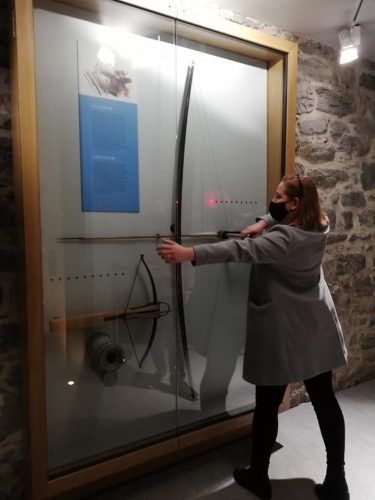
Athlone Castle Visitor Centre – Where History Comes Alive
Next on our schedule was a river trip back to the hotel’s landing stage, in a boat captained by “Viking Mike” McDonnell. Now a semi-enclosed Viking-themed passenger vessel, Mike’s boat, made of larch planking on oak ribs and frames, was built in 1923, measures 21 metres in length, is currently twin screwed and powered by two diesel Perkin engines (model no. 4.236), and has a top speed of 12 knots (22 km/h). I’ve copied that from his website because his river-cruises aren’t just enchanting, they’re laced with so many nuggets of information that I think he’d expect an accurate report. It’s not surprising that Mike’s “Viking Cruises” have been featured on television. Ours, which took us along the river and out across Lough Ree, was a lovely mix of stories, facts about bird life and the surrounding, and long, stretches of silence during which passengers drank in the awesome views. There’s a “snack shop & bar”, with a range of craft beers, Irish whiskeys, soft drinks, and Irish coffee – wonderful when drunk on deck with the wind in your hair. Mike also does a Clonmacnoise Cruise, which means you make a dramatic approach by water, like the Viking raiders, monks, pilgrims and traders for whom the Shannon was the natural route from place to place.
After our second delightful dinner in the hotel’s dinning room, Wilf and I took a moonlit stroll back down to the landing-stage, hearing ropes quietly clinking on masts and occasional scurries of feet or wings in the rushes by the lakeside. Our two-centre break had been all we could possibly have imagined. We’d revelled in walking and wide-open spaces, eaten well, been entertained, educated, and always made welcome. We’d been befriended by sheep and a swan, taken wonderful photos, and sailed down the Shannon in what was very nearly a Viking longship. I hadn’t had the slightest need to bother about makeup, and I was going home energised and ready to get back to work.
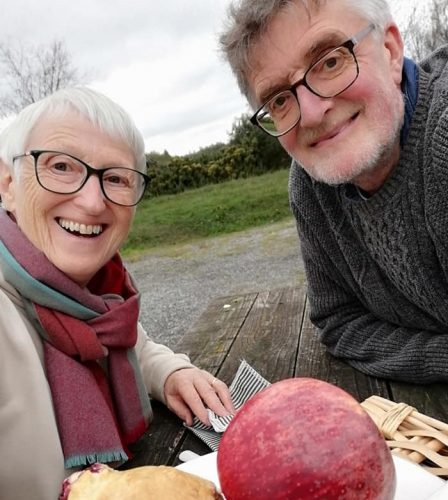
Felicity and Wilf
Read Part I of Felicity and Wilf’s trip to Ireland’s Hidden Heartlands here.

Felicity Hayes-McCoy is the author of the USA Today bestselling “Finfarran” novels, published by Hachette Irl, which have been translated into seven languages and are available in hardback, paperback, ebook and audiobook. Born and educated in Dublin, she built a successful London-based career, as an actor and then a writer Her memoir The House on an Irish Hillside, published in 2012, continues to be read worldwide. A sequel Enough Is Plenty: The Year on the Dingle Peninsula, illustrated with her own photos, was followed by a second memoir, A Woven Silence: Memory, History and Remembrance.
Dingle and its Hinterland: People, Places and Heritage, a cultural guide to West Kerry, was co-written with her husband Wilf Judd with whom she divides life and work between rural Ireland and inner-city London.
Her next book The Keepsake Quilters, a standalone novel set in London and Wicklow, will be published in October 2022, followed in 2023 by a new Finfarran novel.
